Abstract 2/2014
Table of content
Jacek Malasek, Leszek Kornalewski – Autonomic road transport support systems
Paweł Dydyszko – Conditions of bicycles carriage on trains
Piotr Renkiel – The applicability of multi-agent systems in transport
Maciej Michnej, Tomasz Zwoliński – Sustainable Urban Mobility Planning – SUMP under the assumptions of the CHALLENGE Project
Krzysztof Gradkowski – Functional development of tram terminals in big urban agglomerations
Abstracts
Jacek Malasek, Leszek Kornalewski
Autonomic road transport support systems
Abstract: The main goal of the ARTS (Autonomic Road Transport Support Systems) EU project is to unite and align groups from transport studies, computer science and engineering into a world leading research community that will develop radically new ways of designing road transportation support systems based on the ideas of autonomic systems. Autonomic road transport support systems will help in better traffic management&control, adjusting public transport services supply to demand observed and logistical planning. That actions should be supported by preparatory activities i.e. working out methods of changing travel behaviors and further development of the intelligent road&vehicle technology. For the road safety improvement results of the UDRIVE (European Naturalistic Driving and Riding for Infrastructure&Vehicle Safety and Environment) EU research project will be very helpful. The real novelty of the Smart Travel Planner prepared by the IBDiM is: STP will work on strictly personalized Internet portal; STP will cover environmental aspects (for pollution counting); participants will be awarded; the business model idea for cities implementing STP is presented.
Keywords: autonomic system, road traffic management, sustainable transport
Paweł Dydyszko
Conditions of bicycles carriage on trains
Abstract: This article analyzes rules, possibilities and restrictions in the carriage of bicycles on trains. The summary and comparison of practices in the carriage of bicycles on trains, run by Polish railway carriers, are the purpose of this analysis. It is focused on the international and domestic bicycles carriage services. According to the Regulation (EC) No 1371/2007 of The European Parliament and of The Council of 23 October 2007 on rail passengers’ rights and obligations “Railway undertakings shall enable passengers to bring bicycles on to the train, where appropriate for a fee, if they are easy to handle, if this does not adversely affect the specific rail service, and if the rolling-stock so permits”. This article examines the application of this right by the Polish carriers. It shows also a possibility of free carriage and its restrictions. Because of a small number of passengers travelling by UBB sp. z o.o. which offers services between Świnoujście Centrum and Ahlbeck state border, this carrier is not included in this analysis.
Key words: carriage of bicycles, passenger railway carrier, legal and tariff regulations
Piotr Renkiel
The applicability of multi-agent systems in transport
Abstract: Distributed intelligent systems are increasingly used in various fields of science. The example of simplest distributed system is human organization. With features such as negotiation, cooperation and coordination people are able to jointly solve variety of problems. The system consists of communicating and cooperating agents who are able to achieve goals that were set. Situations requiring solution of distributed or complicated character such as searching of an information in the Internet, network management, market simulation, management support in the company or supervision of air traffic present wide range of possibilities of multi-agent system use. Systems based on agents may also be used in the transport. The development of technology has allowed to use artificial intelligence in such fields of science as transport and traffic engineering. The next step in development of intelligent transportation systems is application of the multi-agent systems. Agent based systems may find their use in traffic control systems, modeling and planning of transportation systems in cities. In the article types of agents that might be used and examples of simulation with the practical application are presented. Following examples are given: traffic simulation model in the French city of La Rochelle; construction of the Poznań agglomeration model with the simulation implemented in the MATSim as well as simulation of the traffic at intersections management system implemented by the scientists from Melbourne. The article concludes with short summary of advantages of multi-agent systems and their future application in the ITS.
Key words: multi-agent system, intelligent transportation system, social agent, MATSim
Maciej Michnej, Tomasz Zwoliński
Sustainable Urban Mobility Planning – SUMP under the assumptions of the CHALLENGE Project
Abstract: This article provides an introduction to the methodology of sustainable urban mobility planning (Sustainable Urban Mobility Plan – SUMP), developed on the basis of available documents, guidelines or other source materials. SUMP planning is a new concept promoted by the European Commission in order to protect the climate and to improve energy efficiency in transport. In contrast to traditional approaches for mobility planning, methodological assumptions described in the article put special emphasis on the involvement of citizens and institutional cooperation between different levels of government and management bodies and between neighboring municipalities. The authors drew the basic differences between the traditional approach to transport planning in cities, and this assumed by the methodology of sustainable urban mobility planning, what can help to relatively quick understand of the essential features of sustainable urban mobility planning in relation to so-called traditional methods.Article also presents the assumptions of the CHALLENGE Project – Addressing the four Key Challenges of Sustainable Urban Mobility Planning, being implemented by the Municipality of Krakow. This is an international project, whose goal is to develop innovative, proven in practical action and possible to implement solutions for the four key challenges in sustainable urban mobility planning. Urban transport and mobility should not be a goal itself, but should have a positive impact on high-ranking goals, such as quality of life and well-being of citizens. This is the starting point for the concept of sustainable urban mobility planning. Depending on the national context there may be a legal obligation constraining the development of sustainable mobility plans, but it is always needed to have real commitment of the parties in order to have really durable and effective plan. If there are no leaders at the local level, convincing relevant politicians to become advocates of the development of sustainable mobility will be very difficult.
Key words: transport systems, sustainable transport, mobility, planning
Krzysztof Gradkowski
Functional development of tram terminals in big urban agglomerations
Abstract: Development of tram transport in many Polish cities and the expansion of the tram tracks systems require the exchange of adequate experiences and information. The article presents basic principles of tram terminal development in big cities including the criteria of functionality and optimal construction costs. Example of the basic outline of tram terminal with minimalist equipment and simplest track geometry is used to indicate important criteria to optimize the construction costs of the extended structure. There are few examples of public transport hub realized in large Polish cities. Examples include tram terminal solutions connected with bus interchange. Comparative presentation of methods of hub’s development will contribute with using more effective criteria and forms of bus-tram interchangee with regard to the real local conditions .
Keywords: tram, bus, tram terminal, public transport hub

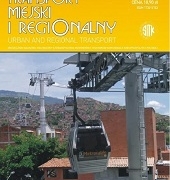 SITK RP
SITK RP 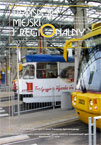 SITK RP
SITK RP 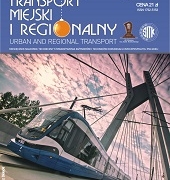 SITK RP
SITK RP 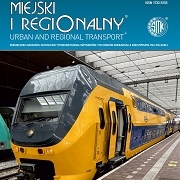 SITK RP
SITK RP 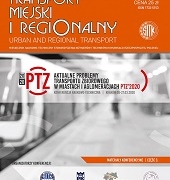
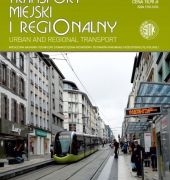 SITK RP
SITK RP 
 SITK RP
SITK RP SITK RP
SITK RP